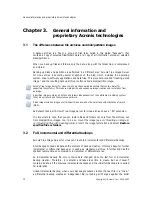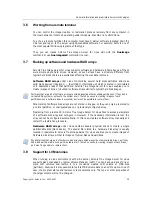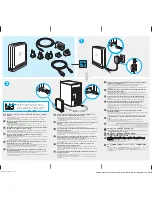
Introduction
Copyright © Acronis, Inc., 2000-2007
7
Chapter 1.
Introduction
1.1
Acronis
®
True Image Server for Linux– a complete solution for
corporate users
You have come to rely on your servers to run your business and retain key enterprise data.
Acronis True Image Server for Linux provides comprehensive, reliable, and cost-effective
system protection and recovery for corporate servers, running Linux. With Acronis True
Image Server for Linux you have peace of mind knowing you are protected and can recover
from any situation.
Minimizes downtime
Acronis True Image Server for Linux enables you to restore systems in minutes, not hours or
days. An entire system can be restored from an image that includes everything the system
needs to run: the operating system, applications, databases, and configurations. No
reinstallation or reconfiguration is required. Moreover, complete system restoration can be
performed to an existing system or to a new system with different hardware or to virtual
machines. File-based backups provide you with the flexibility to only backup selected critical
files.
Eases Administration
Wizards guide users through backup and recovery tasks, ensuring the product can be
implemented with minimal user training.
Automates Backup
With the scheduling capability in Acronis True Image Server for Linux, you simply create
backup tasks, tailored by group, at certain times or at certain events, automating backups.
To ensure that backups have occurred, or user intervention is required, you can request
notifications via email or pop-up. You can view events in Acronis own log.
The product also supports the creation of custom commands before and after backups. For
example, users can automatically run anti-virus products before an image is created and
verify the validity of backups after they have been created.
Ensures 24 X 7 Uptime
With the Acronis Drive Snapshot systems can be imaged while they are in use, supporting 24
by 7 availability. This technology enables the product to backup and image critical operating
system files, the master boot record and any partition-based boot records without requiring
a reboot. A CPU allocation feature allows you to limit the amount of CPU usage for the
application to maximize the CPUs available for mission critical applications. Moreover, users
can control hard disk drive writing speeds and control network bandwidth used during
backups, allowing you minimally disrupt business operations.








































